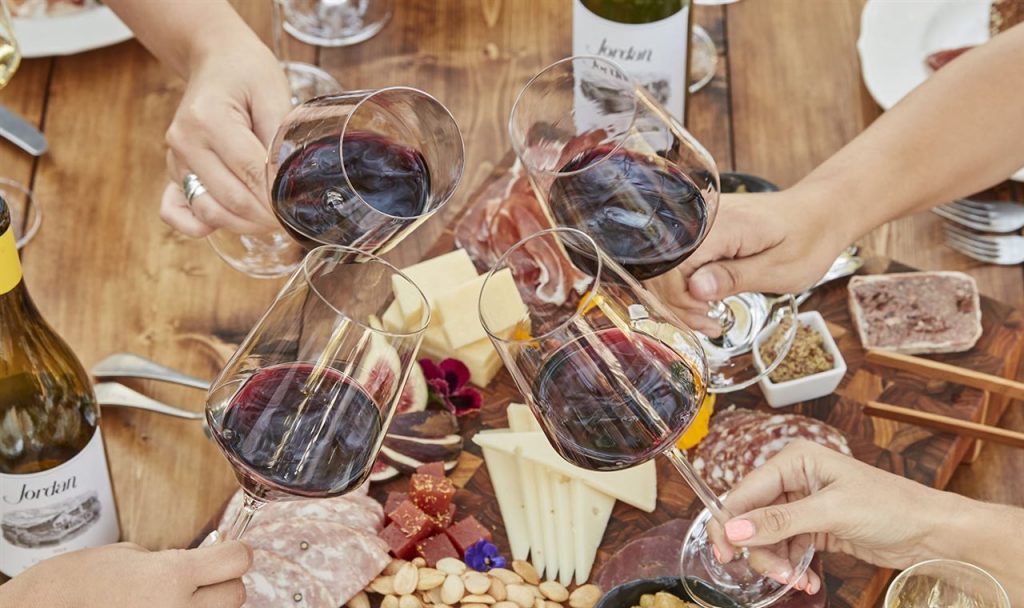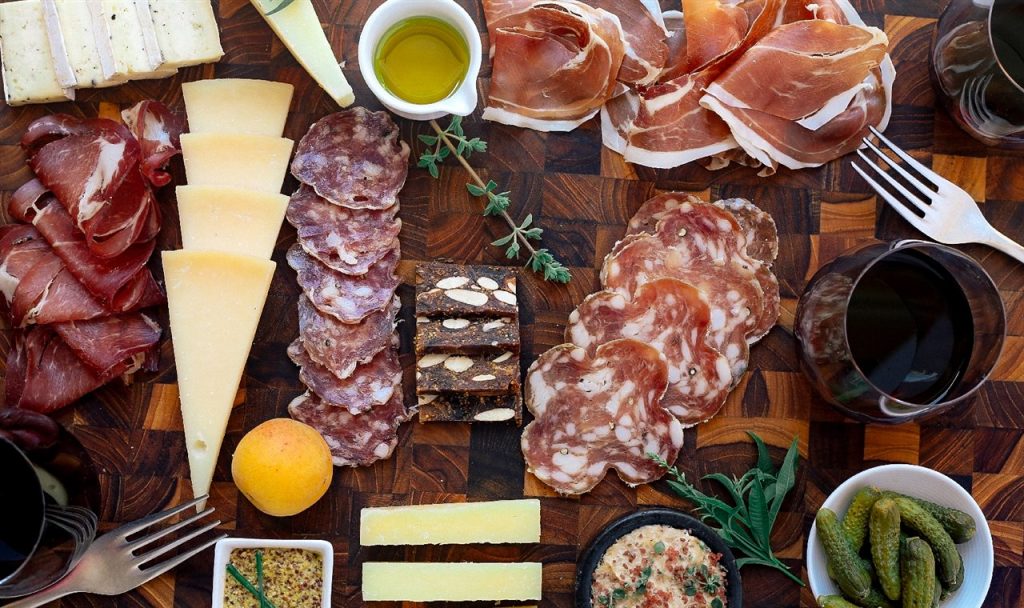
Content provided by BPT
Whether you are planning a bridal shower or a cocktail hour before your wedding reception, planning a party doesn’t have to be difficult. Instead of agonizing over appetizers, opt for serving wine with a charcuterie board — a variety of cured meats, cheeses and condiments that can range from simple to sophisticated. Even a basic spread can look elegant, while providing your guests with inviting flavor combinations.
Todd Knoll, executive chef at Jordan Vineyard & Winery, offers expert tips on combining select cured meats and cheeses with balanced wines to bring out the best in a charcuterie board.
Choose great wines
To keep it simple, offer one red and one white. Choose wines to complement a range of flavors and seasonings in meats and cheeses, so you can offer an interesting variety to tempt your guests.
Chardonnay is popular with wine lovers, and for good reason, with its crisp, fruity notes and vibrant acidity. Many traditional unoaked chardonnays are lighter and so may not pair well with charcuterie, since salted and cured meats and aromatic cheeses have strong tastes that may overwhelm and diminish their delicate flavors. But some French oak-aged chardonnays are created in a fruit-forward, elegant, lower-alcohol style, making them more robust and versatile than other varietals. A young Jordan Chardonnay can even complement most mild blue cheeses, Knoll says.
Another great selection for charcuterie is Champagne, which has just the right acidity — and bubbles — to refresh the palate while sampling meats and cheeses with a higher fat and salt content.
For a red wine selection, Knoll recommends Jordan Cabernet Sauvignon. It pairs well with a wide range of meats and cheeses, due to its balance and elegance. Red wines containing a lot of alcohol and tannin pose a challenge to salty and/or spicy meats like salami and prosciutto. Salt accentuates alcohol, so combining salty food with high alcohol and tannin levels in a wine makes the wine taste hot and the meat even saltier. Because Jordan Cabernet Sauvignon has a fruit-forward flavor, good acidity, subtle tannins and lower alcohol, it works well with charcuterie, providing an unexpected flavor to complement many meats and cheeses.
Select flavorful meats
For a charcuterie board that is as Instagram-able as it is edible, provide a variety of contrasting flavors and textures, Knoll advises. This means choosing harder, salty and spicy cured meats, such as salami. Then add softer salted meats, such as thinly sliced prosciutto, for textural and flavor contrast. Finally, provide a creamy pate, terrine or rillette that guests can spread on bread or crackers.

Choose delicious cheeses
Offer guests a choice of flavors and textures that also complement the wine. Sheep’s milk cheeses, such as Roquefort, manchego and pecorino Romano, pair well with cabernet sauvignon, particularly cheeses that have been aged at least six months for complexity and nutty flavor. Firmer, more aged cow’s milk cheeses, such as Gouda and cloth-bound cheddar, will complement a variety of cabernet sauvignon styles. Knoll says that firmer cheeses that have been aged longer have a milder, nuttier texture and smooth taste that highlight the oak and berry notes in cabernet sauvignon.
A creamy Camembert is a good match with chardonnay, as is brie and other soft cheeses, according to Knoll. Chardonnay can also be paired successfully with creamy goat cheeses. Champagne complements washed rind cheeses such as taleggio, Limburger and Epoisses, as its acidity cuts through the richness of these more pungent cheeses.
Add delectable condiments
A fabulous charcuterie board is not complete without an array of flavorful condiments. Source good mustard like whole grain Dijon, Knoll advises, plus quince paste or pear mostarda. Add olives, fresh or dried fruit, nuts or pickles to taste, plus fresh, warmed crusty bread or crackers.
Watch your temperature
The three essentials of a great charcuterie board — meat, cheese and wine — all shine when served at the proper temperature. Before guests arrive, chill white wines. Cheeses should warm to room temperature for best flavor, while meats should be cold.
Designing your platter
Slice different shapes and sizes of the cheeses and meats to provide visual interest, such as triangles, squares and rectangles for cheeses, and circles, rosettes and folded triangles for meats. Spend time arranging the elements, coupling colors and textures to create a platter far superior to store-bought versions. Place condiments and nuts in small, colorful dishes atop the board for convenience and color contrast. Add fresh herbs or edible flowers for garnish. Get inspiration from Knoll’s How to Build a Charcuterie Board video on the Wine Country Table website.
Parties can be more relaxing — and delicious — with an easy-to-prepare charcuterie board and good wine. For more tips on wine, food and entertaining, visit winecountrytable.com.






















































































































